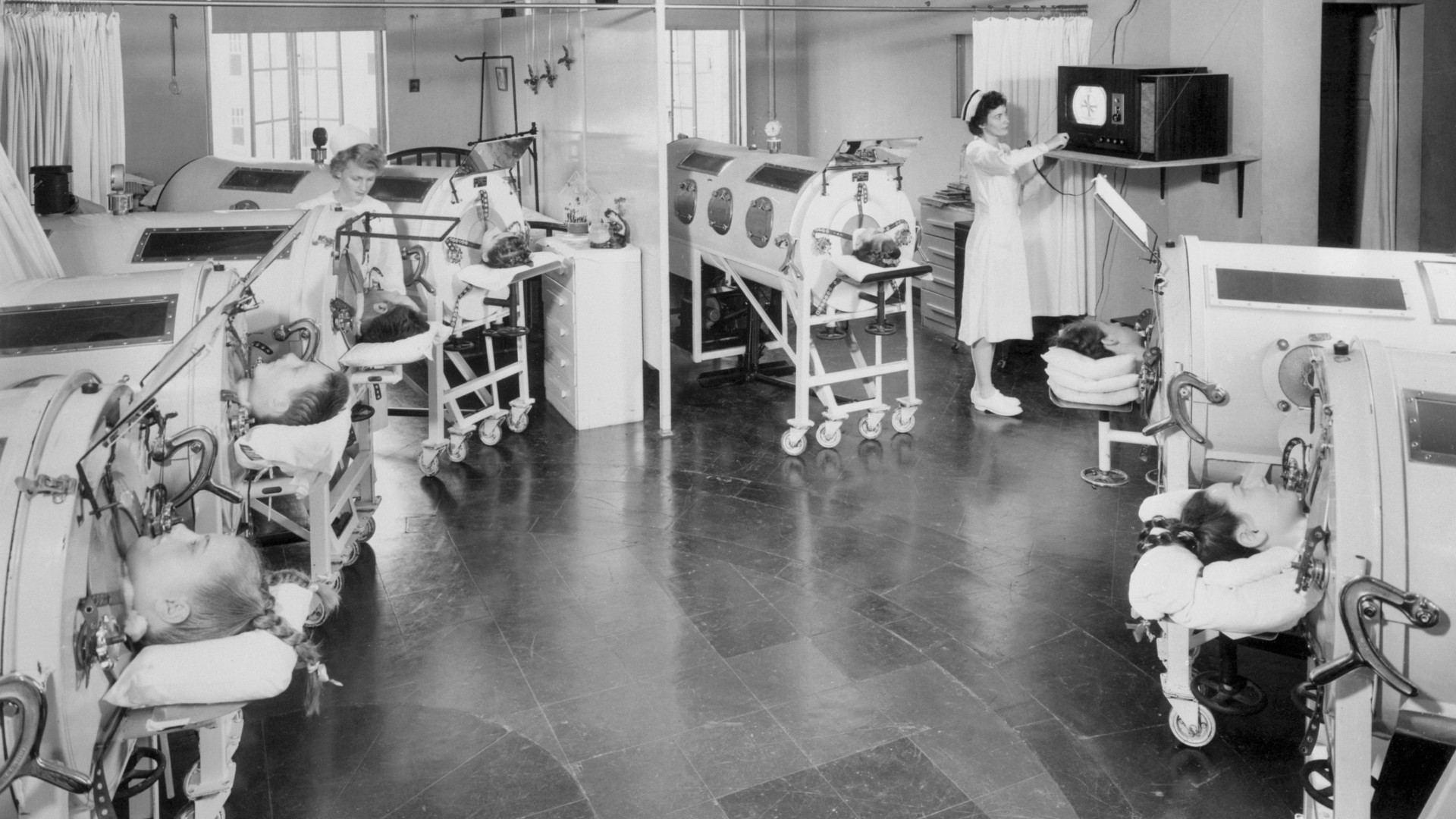
Paul Alexander, an American man who lived in an iron lung for more than 70 years after catching polio, has died at age 78.
Alexander caught the viral disease when he was 6 years old, in the summer of 1952 when he was living in Texas. The first effective polio vaccine wasn’t licensed until 1955. Although many people who catch polio don’t show any symptoms, about 1 in 200 become paralyzed for life. Among those with paralysis, between 5% and 10% die because their muscles needed for breathing stop working.
In Alexander’s case, the infection left him paralyzed from the neck down and unable to breathe independently, so doctors put him in an iron lung, which at the time was a state-of-the-art life-support technology that inhales and exhales on the person’s behalf.
Over the next 70 years, Alexander went to college, became a lawyer and published a book about his life, entitled “Three Minutes for a Dog (FriesenPress, 2020).” Alexander’s death was announced Tuesday (March 12) on a GoFundMe page organized by Christopher Ulmer, an American disability-rights advocate who met and interviewed Alexander in 2022.
Related: Polio is spreading in the US for the 1st time in decades. Do you need a booster?
“His story traveled wide and far, positively influencing people around the world,” Ulmer wrote on the GoFundMe page. “Paul was an incredible role model that will continue to be remembered.”
Polio, also known as poliomyelitis, is a highly infectious, viral disease that mainly affects children under the age of 5. It is usually transmitted from one person to the next through contact with poop from an infected individual, or less commonly, via the inhalation of droplets, from a person’s sneezes or coughs, for example. Once inside the body, poliovirus multiples in the throat and intestines and can sometimes invade the nervous system, leading to paralysis.
Iron lungs were introduced as a result of epidemics of polio that were taking place in Europe and the U.S. during the first half of the 20th century. The first one was used in 1928 to save the life of an 8-year-old girl at Boston Children’s Hospital.
The devices are large, horizontal cylinders that act as artificial respirators, which work by mimicking the breathing process: air is first sucked out of the box by air pumps that are operated either manually or using a motor. This creates a vacuum that causes the patient’s lungs to expand and draw air in. Then, the air is let back into the boxes, increasing the pressure inside and thus deflating the patient’s lungs to expel air.
The first polio vaccine, rolled out in the 1950s, was developed by an American virologist named Jonas Salk. Following this, a global initiative sought to eradicate the disease — to drive the number of cases to zero, permanently — from 1988 onward.
This effort has driven cases of wild poliovirus down by more than 99% since 1988. Wild poliovirus infections are the most common known form of polio, as opposed to vaccine-derived poliovirus, a rare scenario in which people can become infected with the weakened, live version of the virus included in some shots. (Because of this risk, many countries, including the U.S., no longer use certain polio vaccines.)
There were 350,000 estimated cases of wild poliovirus across more than 125 countries in 1988, but just 6 cases in two countries in 2021. Of the three known types of wild poliovirus, two have been eradicated worldwide: type 2 in 2015 and type 3 in 2019. Type 1 still circulates in Pakistan and Afghanistan.
As polio case numbers have dropped, iron lungs have disappeared from use, with only a handful of people who were already in the devices, like Alexander, still using them. Nowadays, patients who need help to breathe are instead given modern ventilators, which don’t require a person to be immobilized in a tube. For example, today, a tube connected to a ventilator may be inserted into a patient’s airway or they may wear a face mask connected to such a device.
Ever wonder why some people build muscle more easily than others or why freckles come out in the sun? Send us your questions about how the human body works to [email protected] with the subject line “Health Desk Q,” and you may see your question answered on the website!

